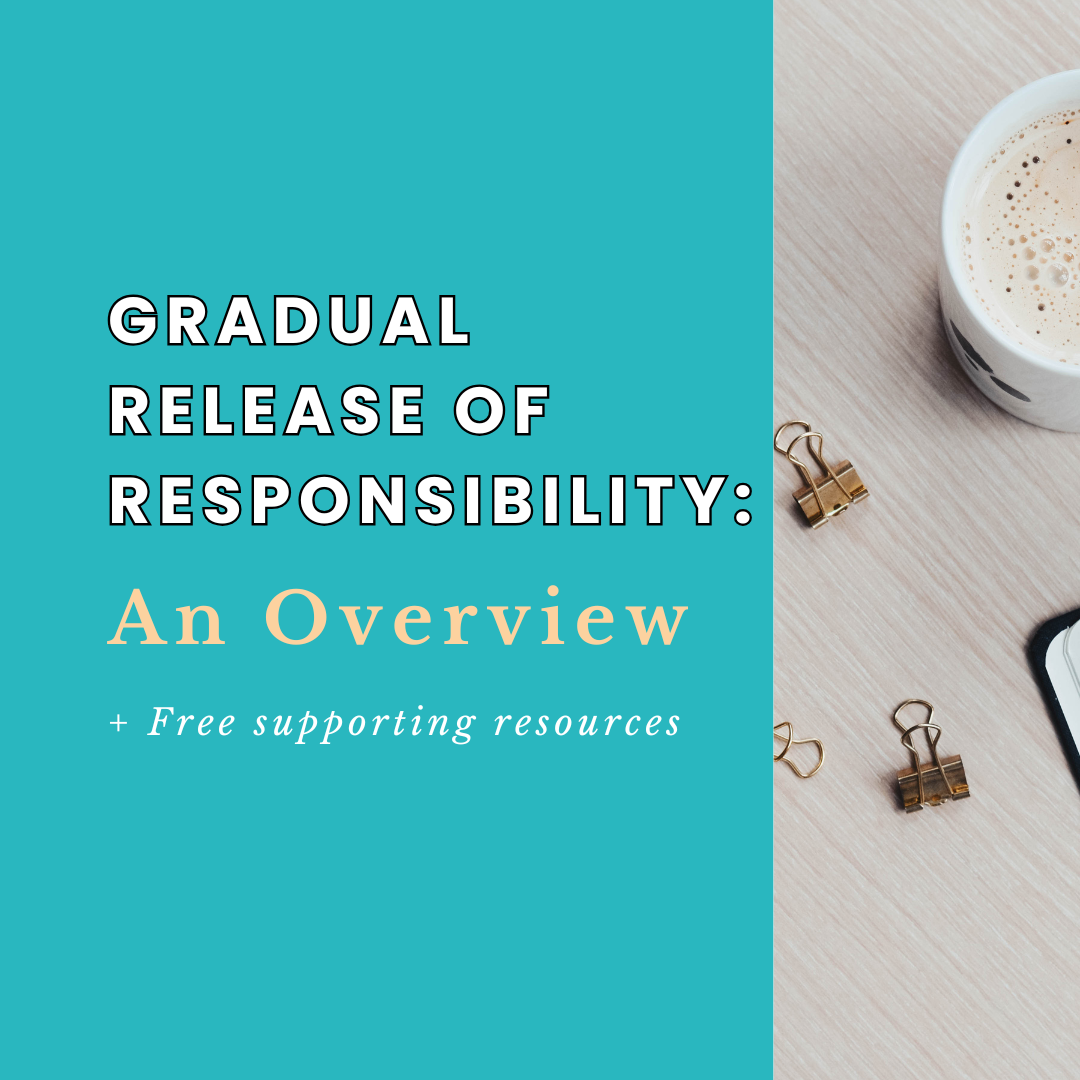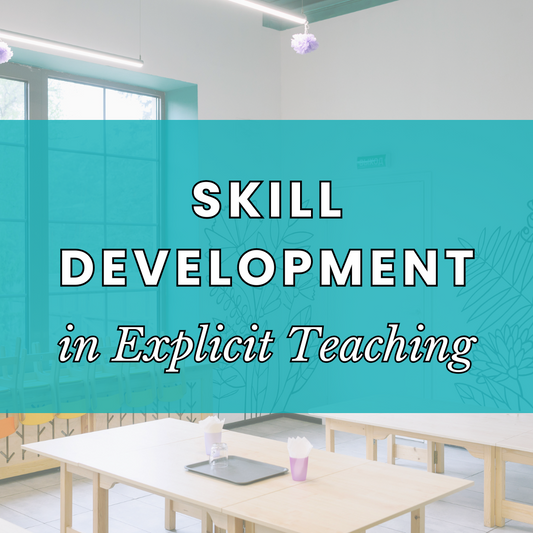
The Gradual Release of Responsibility: An Overview
Share
What is the Gradual Release of Responsibility?
The Gradual Release of Responsibility (Pearson & Gallagher, 1983) is a teaching technique that is used to help students learn how to take responsibility for their own learning. It is a process in which the teacher gradually releases responsibility for learning from the teacher to the student.
The gradual release of responsibility model of instruction requires that the teacher shift from assuming “all the responsibility for performing a task … to a situation in which the students assume all of the responsibility” (Duke & Pearson, 2002).
The Gradual Release of Responsibility can be used in many different ways, but it usually starts with the teacher providing some instruction and then gradually releasing more and more responsibility to the student. In this post, I will explain how to implement in your classroom, give some examples and provide benefits for using this practise.
How to Implement the Gradual Release of Responsibility in Your Classroom
Firstly, the gradual release of responsibility in the classroom can be implemented in many ways. One way is by using the I Do, We Do, You Do technique. This technique involves three steps:
- The teacher does an activity with the whole class (I Do). During the Lesson 'I Do' students watch and listen to the teacher.
- The teacher asks the students to participate. This can be as a full class activity, with partners or small groups (We Do). During the lesson 'We Do' students participate in pairs or small groups.
- The students do an activity on their own (You Do). During the lesson 'You Do' students practise the skills by themselves, whilst the teacher gives feedback against the criteria for success.
This gradual release may occur over a day, a week, a month, or a year.
Modelled Instruction (I Do)
Modelled Instruction is where the teacher models his or her thinking as they are teaching (think-alouds). This helps students to develop their own understanding of the content. The focus lesson is a brief lesson. It establishes the purpose or intended learning outcome and criteria for success. In this part of the lesson, teachers also activate prior knowledge and develop understanding of concepts (defining key concepts).

Guided Instruction (We Do)
During guided instruction, teachers prompt, question, facilitate, or lead students through tasks that increase their understanding of the content. While this can, and sometimes does, occur with the whole class, it can also occur in pairs or small groups. Guided instruction provides teachers an opportunity to address needs identified on formative assessments and provide feedback against the success criteria.
Collaborative & Independent Learning (You Do)
Collaborative learning opportunities ensure that students practice and apply their learning while interacting with their peers.
Independent learning is a key component of the educational process. It allows students to practice their skills and apply new information in a way that is different from the classroom setting. Independent learning encourages learners to explore their interests, develop skills, and foster creativity.
Instructional Routines
It’s really important to establish learning, or instructional, routines that teach your expectations for each each part of the lesson. Visuals prompts are really important to reinforce your message. This can help the students know which part of the lesson that they are currently in and what is coming next.
Establishing routines can take time in the beginning, however, it will be well worth it. Once your students have learned the instructional routines, they will expend less brain power on the process and will be able to focus on the content. This will reduce the cognitive load of your students.
Some *FREE* resources that will assist with implementing the Gradual Release of Responsibility in your classroom are shown below.
Benefits to Using the Gradual Release of Responsibility
Evidence-Based Practice
The gradual release of responsibility model of instruction is a progressive, research-based approach to teaching. It starts with the teacher modelling the correct response and gradually releases responsibility to the student as they show they can do it on their own. This approach has been documented as an effective way for improving literacy achievement, reading comprehension, and literacy outcomes for English language learners.
Practise, Feedback and Mistakes
The human brain is a powerful tool for learning. A majority of learning is done through a process called observation-execution-feedback, which simply means that if we want to learn something new, we need to practice and then get immediate feedback. The Gradual Release of Responsibility allows for such practice and feedback.
Accommodates for Different Learning Needs
There are many factors that can account for the difference in preparedness for learning. Some students come into classrooms with a background knowledge and skills set that is more advanced than others, while some students may have not had access to schooling. Therefore, the Gradual Release of Responsibility allows teachers to be prepared for all levels of preparedness. Teachers can move some students through the process quicker than others so that they are learning independently while they have more focused and guided instruction with the students who have higher needs.
The Gradual Release of Responsibility is a Powerful Teaching Tool
The Gradual Release of Responsibility is a powerful teaching tool. It is a technique that teachers can use to help students learn how to take responsibility for their own learning. It is a process in which the teacher gradually gives up control and allows the student more responsibility over time.







